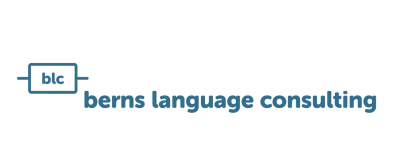Terminologiearbeit hört niemals auf: Festgelegte Terminologie und somit auch die Corporate Language oder spezifische Fachausdrücke können sich im Laufe der Zeit verändern. Man muss also terminologische Daten laufend pflegen, aktualisieren und bereinigen.
Vor Kurzem haben wir schon beleuchtet, wie ein “perfekter” Terminologie-Workflow aussehen kann und sich einzelne Terminologieprozesse zu einem stimmigen Workflow kombinieren lassen. Heute widmen wir uns explizit der Bedeutung von Terminologiebereinigung für abgestimmte Terminologie-Workflows.
Terminologiebereinigung: ein Steckbrief
„Bei der Terminologiearbeit geht es darum, einheitliche, eindeutige und geprüfte Fach- und Unternehmens- sowie verbotene Terminologie für den Einsatz im gesamten Unternehmen […] festzulegen“ (people text 2020). Und für genau dieses Ziel tritt die Terminologiebereinigung im Rahmen der Terminologiepflege auf den Plan. Sie sorgt dafür, dass Terminologiedatenbanken frei von Dubletten und veralteter bzw. fehlerhafter Terminologie sind. So ist die korrekte Verwendung der korrekten Terminologie zu jedem Zeitpunkt gewährleistet.
Es steht also fest: Ist eine Terminologiedatenbank einmal erstellt, ist sie nicht in Stein gemeißelt. Im laufenden Prozess kann es immer wieder vorkommen, dass neue Terminologie ergänzt oder bereits bestehende Terminologie angepasst werden muss. Das liegt daran, dass Terminologieprozesse immer auch Austausch- und Abstimmungsprozesse beinhalten, über die sich alle am Terminologieprozess beteiligten Personen austauschen und über die Verwendung von Terminologie diskutieren können.
Wann muss man Terminologie bereinigen?
Durch die Möglichkeit des Austauschs und der Abstimmung, können im gesamten Terminologieprozess Situationen auftreten, die eine Bearbeitung der Terminologie erforderlich machen. Um nur ein paar zu nennen:
- Nutzende oder andere Mitarbeitende schlagen neue Benennungen oder Begriffe vor
- Man einigt sich über Abstimmungsprozesse auf Änderungen in bestehenden Einträgen
- Es ändert sich der Verwendungsstatus von bereits hinterlegten Benennungen
- Jemand möchte eine Übersetzung zu einem bestehenden Eintrag hinzufügen
Genauso können z. B. auch Einträge entdeckt werden, deren Vorzugsbenennungen genaugenommen Synonyme sind. Ein Beispiel hierfür wären “Erste-Hilfe-Set” und “Verbandstasche”. Beide Benennungen meinen dasselbe und sollten daher eigentlich in einem einzigen zusammen Eintrag stehen. Entdeckt jemand so ein Phänomen im Tagesbetrieb, kann durch die Durchführung einer punktuellen Terminologiebereinigung eine Korrektur vorgenommen werden.
Solche und andere Fälle können immer mal wieder auftreten. So sollte es auch sein, da nur abgestimmte und aktualisierte Terminologie akzeptiert und genutzt wird.
Wozu genau Terminologiebereinigung?
Terminologiearbeit und demnach auch die Terminologiebereinigung ist ein fortlaufender Prozess, der regelmäßig durchgeführt werden sollte und nie wirklich endet. Aber warum denn nun genau? Was sind Vorteile einer regelmäßig durchgeführten Terminologiebereinigung – einer konsistenten Terminologie?
Ganz einfach: konsistente und bereinigte Terminologie beugt Missverständnissen vor, reduziert Übersetzungskosten und kann auch das Auftreten rechtlicher Probleme verhindern. Einheitlichkeit in der internen Kommunikation sowie in der Außendarstellung sind hier ebenfalls positive Begleiterscheinungen, die mit der Definition und der fortlaufenden Pflege von Terminologie einhergehen (vgl. people text 2020).
Man kann also sehr schnell erkennen, wie viel letztendlich wirklich von einer einheitlichen und bereinigten Terminologie abhängt. Nicht zuletzt, da wirklich viele verschiedene Abteilungen im Unternehmen Fachterminologie nutzen. So z. B. Produktdesign, Entwicklung, Technische Dokumentation, Übersetzung, Vertrieb, Marketing, und nicht zuletzt die Kunden. All diese Personen und Abteilungen brauchen Terminologie und sind darauf angewiesen, dass die Terminologiedatenbanken regelmäßig “aufgeräumt” und gepflegt werden. Nur so können sie Terminologie auch wirklich sinnvoll nutzen, ohne sich im Terminologie-Wirrwarr zu verlieren.
Ein Weg oder viele?
Es führen immer viele Wege nach Rom. So auch bei der Terminologiebereinigung.
Manche Kunden entscheiden sich dafür, sie extern zu beauftragen. Andere integrieren sie als Teil eines Workflows in den laufenden Betrieb. Hier kommt es ganz darauf an, was gewünscht ist. Die perfekte Steilvorlage also für eine individuelle Beratung.
DEN perfekten Prozess gibt es somit nicht. Jedes Unternehmen muss seine Terminologie-Workflows und dementsprechend auch das Vorgehen bei der Terminologiebereinigung individuell festlegen und an die eigenen Anforderungen anpassen.
Wie können Sie Terminologiebereinigung in Ihre Prozesse integrieren?
Wenn Sie bereits Terminologiebereinigung betreiben oder Sie gerne wissen möchten, was in diesem Bereich möglich ist, kontaktieren Sie uns gerne! Wir beraten bei der Gestaltung des gesamten Workflows und bieten Optimierungen in allen Stationen und Prozessebenen an.
Auch noch spannend: Nach dem heutigen ersten Einblick wird Sie mein Kollege, Elias Kempkens, in einem nächsten Blog mitnehmen in die technischeren Hintergründe der Terminologiebereinigung. Dabei berichtet er über Herausforderung bei der Terminologiebereinigung, gängige Herangehensweisen sowie produktive Lösungsansätze. So besteht für Sie niemals die Gefahr, den Wald vor lauter Bäumen nicht mehr zu sehen.






